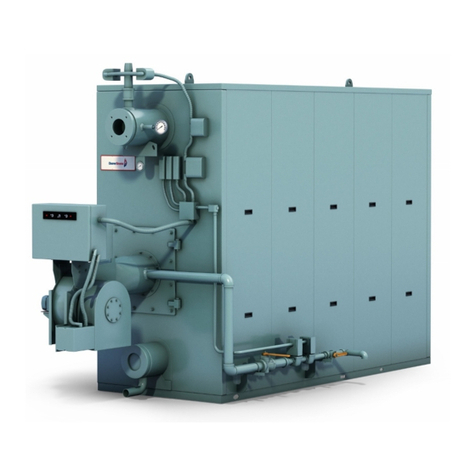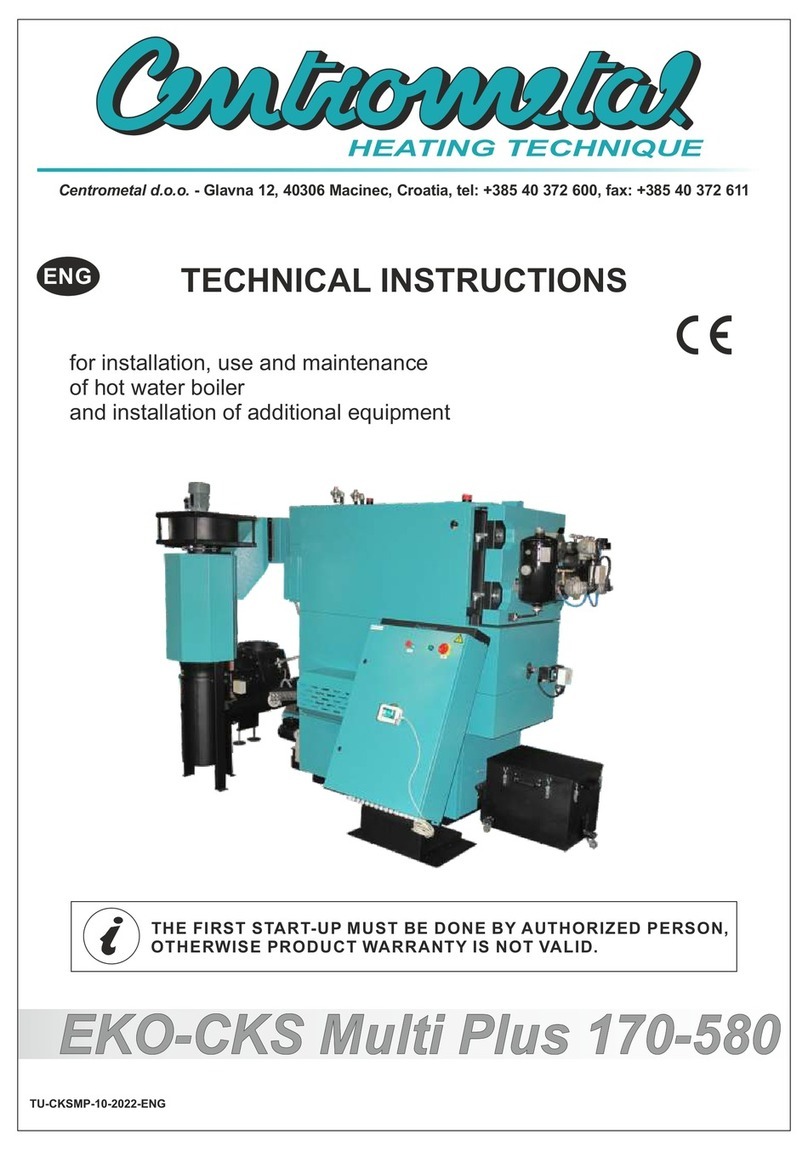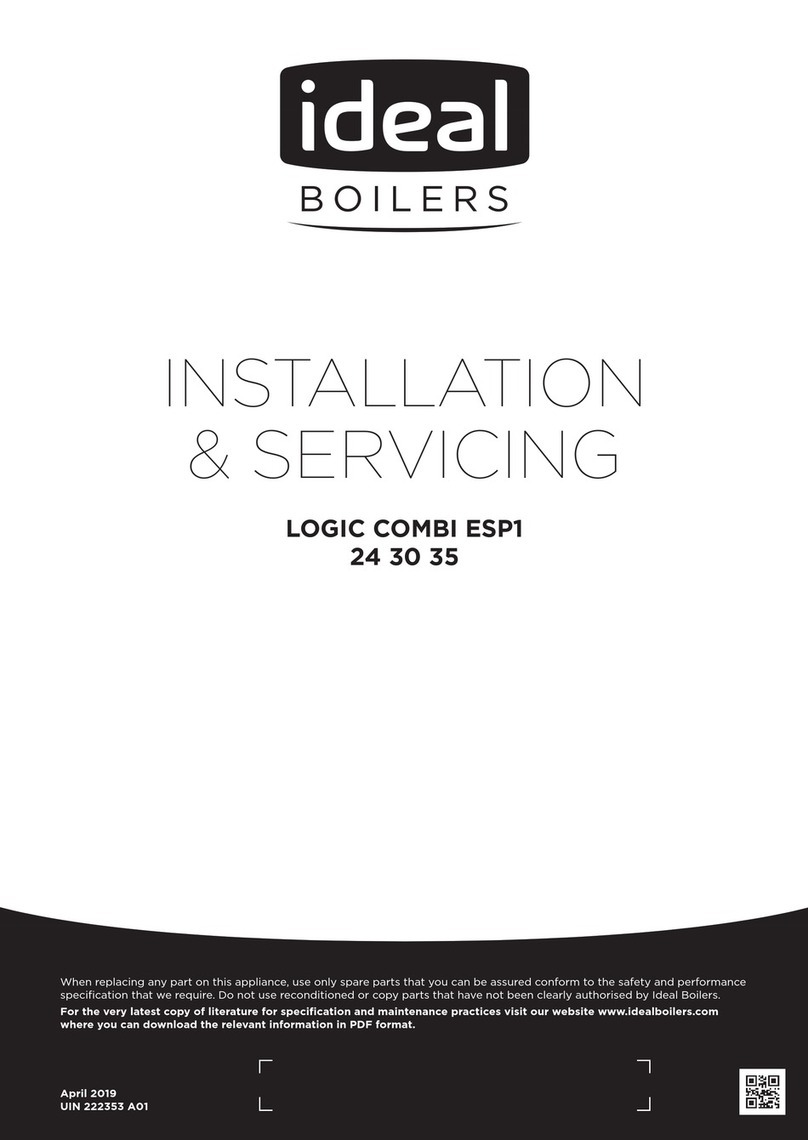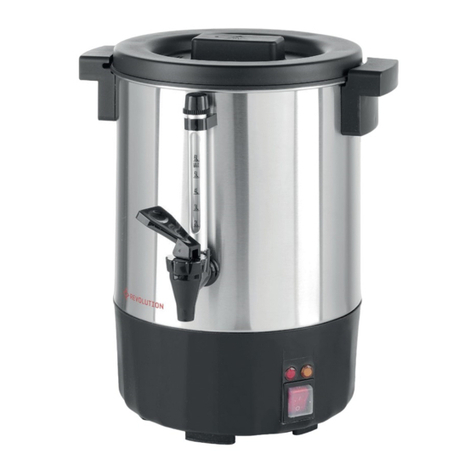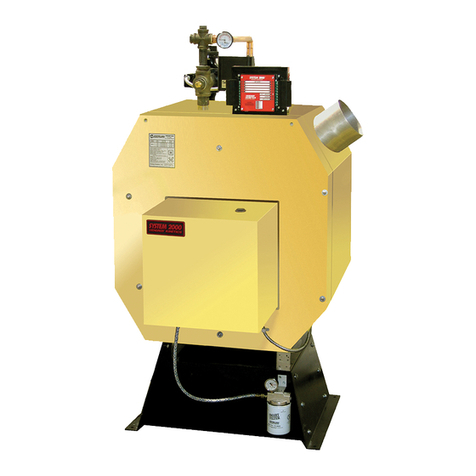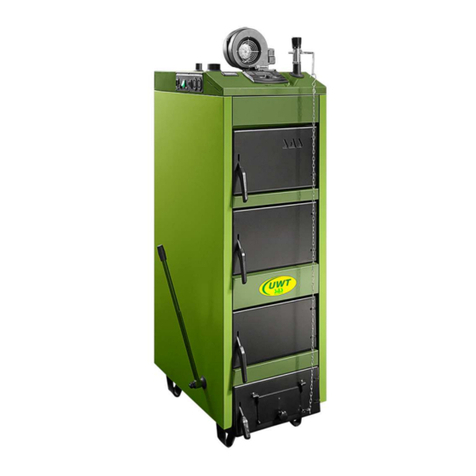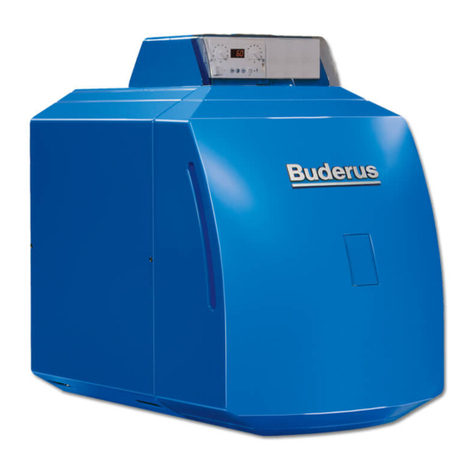feature, a full and unobstructed return air
path to the heater(s) must be provided, with
return air grilles connected by ducting directly
to the return air inlet on the heater. The limit
for recirculation should not be greater than
85% recirculated air to 15% fresh air.
Where the heater is installed within a
enclosure or plant room the return air and
discharge air arrangement must be such that
the air circulation fan does not interfere with
the operation of the flue. The return air intake
and warm air outlet should therefore be fully
ducted to and from the heater, respectively,
within the compartment or plant room.
If the inlet air is ducted to the outside, then
the lowest edge of the inlet air duct must be
at least 500 mm above the outside floor or
ground level, it must also be fitted with an
access point (s) to allow for cleaning and
servicing to occur. The openings in the
structure of the plant room, through which
the ductwork passes must be of fire resistant
material and constructed to prevent the
likelihood of any fire from spreading.
In ducted applications the ductwork must be
designed so as to give a static pressure
within the limits stated in section 8 of this
manual. It should be noted that if the static
pressure is too high, nuisance shut-down will
occur when the heater goes out on the
overheat limit thermostat, if the static
pressure is too low, then damage can be
caused to the fan motor.
Warm air outlets on ducted applications must
be such that they cannot be closed or
become blocked, which again would lead to
an increase in static pressure and nuisance
shutdown.
The outlets must not be sited so that warm
air can be discharged onto combustible
materials, if necessary, guard rails should be
used to ensure that effected areas are kept
clear. Return air intakes must not be located
so that potentially harmful or hazardous
contaminated air can be drawn into the
system.
2.6 Flue system
It is essential that the products of combustion
are flued to the outside of the building. Each
heater must have its own separate flue, with
a flue diameter of not less than is detailed in
section 8 within this manual.
the minimum vertical length of flue must not
be less than 3m. The flue should rise
vertically, and the number of bends should
be kept to a minimum.
Flue pipe should be supported at intervals
not exceeding 1.8mtrs
Flue pipes below a height of 2 m should
be guarded against the possibility of
being accidentally touched when hot by
personnel
It is strongly advised that BS 5854; 1980,
and BS 5440; parts 1 and 2, are used as
consultative documents when considering
flue requirements.
Care should be taken to ensure that the flue
terminal is not situated in a high pressure
area, the proximity of buildings and other
obstacles which will influence this must be
taken into account, preferably at the design
stage. See figures 2-12.
Provision must be made for the
disconnection of the flue for inspection and
service requirements, and it is strongly
advised that where bends are fitted
inspection covers are included. The materials
from which the flue is constructed must be
non-combustible, resistant to internal and
external corrosion, and be capable of
withstanding the stresses and loadings
associated with normal use.
When designing the flue system the
prevention of the formation and entrapment
of condensation must be a key consideration.
Twin wall or insulated systems are
recommended as they tend to inhibit the
formation of condensates.
Where condensation is unavoidable traps
should be included to encourage the
condensates to flow freely to a point from
which they may be released, preferably into
a gully. The condensate pipe from the flue to
the disposal point must be made from
corrosion resistant pipe of not less than
25 mm internal diameter.




















